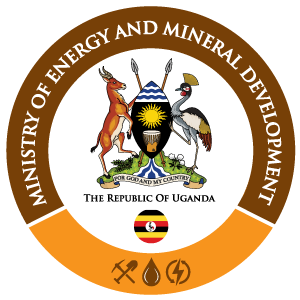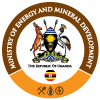FAQS ON BIOETHANOL FOR BLENDING AND BLENDED PRODUCT
- Home
- FAQS ON BIOETHANOL FOR BLENDING AND BLENDED PRODUCT
- What is Bioethanol and how is it produced?
Bioethanol, also known as ethyl alcohol, is a renewable fuel produced by fermenting sugars derived from plant material like corn, sugarcane, or cellulose and starch-containing materials (such as corn, cassava, sorghum, etc.)
- What are the uses of Ethanol?
Ethanol is used for Potable purposes, as a feedstock for the Pharmaceutical, Beverage, and Chemical Industries.
Anhydrous 99.8% purity is used for blending with Petrol as transportation fuel, 96.4% Purity Extra Neutral Alcohol is used in Beverage industries to produce spirits and 84% Ethanol is used as clean cooking fuel.
- What is the difference between Ethanol for Potable Alcohol and Fuel Grade Ethanol for blending with Petrol?
Potable Ethanol has 96.4% Ethanol content. Fuel Grade Ethanol used for blending has an Ethanol content of more than 99.5% and should meet the Uganda Standard (US) 916: 2021, Denatured ethanol for blending with gasoline — Specification.
- What is the Ethanol Blended Petrol (EBP) program?
The Ethanol Blended Petrol program was initiated by the Government of Uganda to promote the use of locally produced Bioethanol as transportation fuel blended with Petrol to reduce carbon dioxide emission as well as reduce the import of fossil fuel.
Additionally, the Ethanol Blended Petrol program is part of GoUs efforts to enhance energy security, sustainability, and the other economic benefits expected from the development of a sustainable biofuels industry value chain regarding sugarcane, cassava, sorghum, and maize i.e. Create an alternative market for domestic agricultural produce.
- How Ethanol blending in Petrol is beneficial?
Ethanol has a higher Octane Number of 108-113 compared to petrol (gasoline) of 87 to 93. This improves engine power and performance and significantly reduces pollutants (Carbon Monoxide, Sulphur Oxides, Nitrogen Oxides, Hydrocarbon, and Particulate Matter) in vehicle exhaust when compared with fossil fuels on combustion.
- What are the effects of blended petrol on vehicle performance?
A blending ratio of ethanol by volume of up to 20% does not alter the performance of the vehicles currently on Uganda’s market and does not require engine modification. The blend offers advantages as described above.
- What are the targets set under the EBP Programme and their current status?
The Ethanol Blended Petrol Programme (EBP), which is scheduled to commence on July 1st, 2024, will mandate a 1% blend by-volume ratio of ethanol into petrol.
This is facilitated by a comprehensive legal framework comprising the Biofuels Act 2020, which provides for blending to 20%, and the Biofuels Regulations 2022.
The Government shall undertake a gradual process to achieve the 20% target depending on the available biofuel stock. The Minister shall declare the optimum blending ratio of biofuel per volume of petroleum product, with a target of 5% blend by 2040 as per the Energy Policy 2023, which sets Biofuels blending targets.
Table 1 Imports of petrol and anticipated quantities of ethanol required for blending at 1%
Blending target (L) | 2023 | 2024 | 2025 | 2026 |
Petrol (L) (7% growth rate per annum) | 936,000,000 | 1,001,520,000 | 1,071,626,400 | 1,146,640,248 |
E1 (1% blend) | Nil | 10,015,200 | 10,716,264 | 11,466,402 |
- What is the availability of feedstock/bioethanol?
Uganda currently has an installed capacity of 51,950 distilleries with a production capacity of 41,500 liters/day of ENA which is expected to more than double with the Kinyara plan getting online.
Millers and distillers currently produce hydrous Extra Neutral Alcohol (ENA) which is used to produce potable spirits at 96.4% purity.
Kakira’s 60,000 plant is designed to switch to the production of Anhydrous Fuel Ethanol (within a maximum of eight (8) hours at 99.8% purity, with the capacity to generate 20 million litters annually, the companies committed to provide a steady supply of bioethanol to the market to meet the demand of blending feedstock, as other plants to install the dehydrators.
- What are Blending Locations?
Blending shall be done at a central facility, the border zones, and decentralized depots across the country. For the initial phase, the blending shall be at depots.
- What is the Pricing of Ethanol for Blending?
The price of ethanol shall be determined by market forces of supply and demand in the liberal market. The expected cost of ethanol per liter is 1.5 USD initially but is expected to go down as other millers start production.
- How will the EBP program Affect Fuel Price at the pump?
Yes, prices are expected to decrease as many producers of ethanol come on board. Since denatured ethanol is not subjected to taxes and high transportation costs as compared to imported fossil fuels. The blending for now shall not alter the current pump price since it’s a small percentage of 1%.
- What is the procedure followed for procurement of Ethanol for the EBP Programme by Oil Marketing Companies (OMCs)?
Oil Marketing Companies shall sign a contract with Ethanol producers detailing; the price per quantity and transportation of Ethanol plus a commitment to supply without fail whenever Oil Marketing Companies need Ethanol for blending.
- What are the License Categories:
The specific license type you need might depend on your biofuel production activities:
- Production license: For facilities manufacturing biofuels (e.g., ethanol, biodiesel).
- Storage and transport license: For facilities storing and transporting biofuels.
- Blending license: For facilities blending biofuels with conventional fuels.
- What is the Application Process:
- Gather Required Documents:
The exact documents might vary based on the license category, but common requirements include:
- Completed application form: Obtainable from the MEMD offices or MEMD website.
- Detailed Business Plan: Outlining your biofuel production process, feedstock sourcing, target market, and financial projections.
- Environmental Impact Assessment (EIA) and NEMA Certificate: Approved by the National Environment Management Authority (NEMA).
- Proof of Land Ownership or Lease: Meeting safety standards outlined in relevant Ugandan standards (obtainable from UNBS), land for production.
- Uganda Revenue Authority (URA) Tax Identification Number (TIN): For new companies, and Tax Clearance Certificate for existing companies.
- Additional Documents: Specific licenses might require further documents, such as:
- Proof of storage, facilities (storage license).
- Supply contracts with licensed biofuel producers (blending license).
- Vehicle details and driver qualifications (transport/retailing license).
- Submit Your Application:
- You can submit your application in two ways:
In-person: At the MEMD.
Online: To be updated.
- Pay Application Fee:
The exact fees are as below payable to URA, The payment process is soon to be updated on the URA portal.
Matter | Fees in Shs |
Application fee for licence to- (a) produce any biofuel (b) blend any biofuel with any other fuel or biofuel; (c) Storage and transport of biofuel | 300,000/= 300,000/= 300,000/= |
Renewal of licence | 150,000/= |
Change of information or particulars | 100,000/= |
Duplicate copy of licence | 100,000/= |
Search of registry | 50,000/= |
Appeal | 500,000/= |
adipiscing elit. Ut elit tellus, luctus nec ullamcorper mattis, pulvinar dapibus leo.
Contact Info
Amber House, Plot 29/33, Kampala Road
Kampala, Uganda
Mon – Fri: 8:00 am – 5:00 pm

